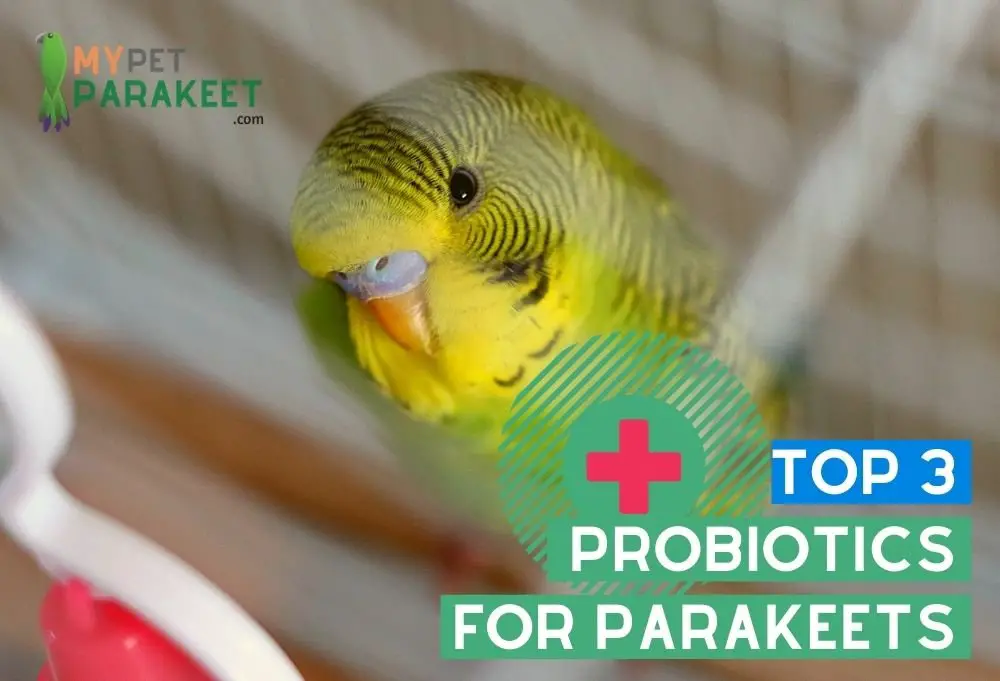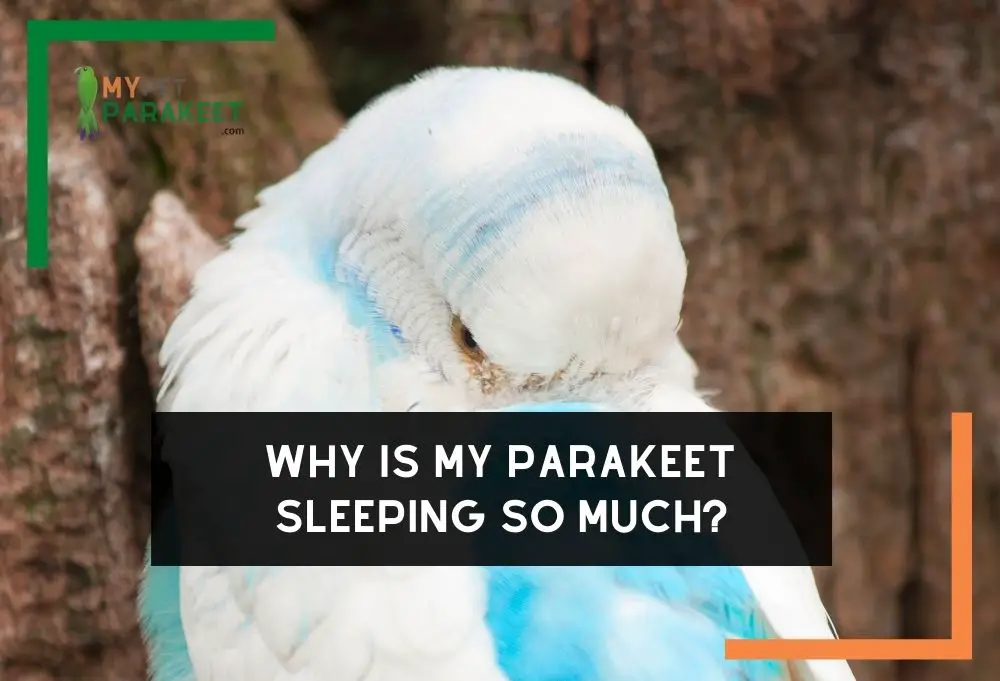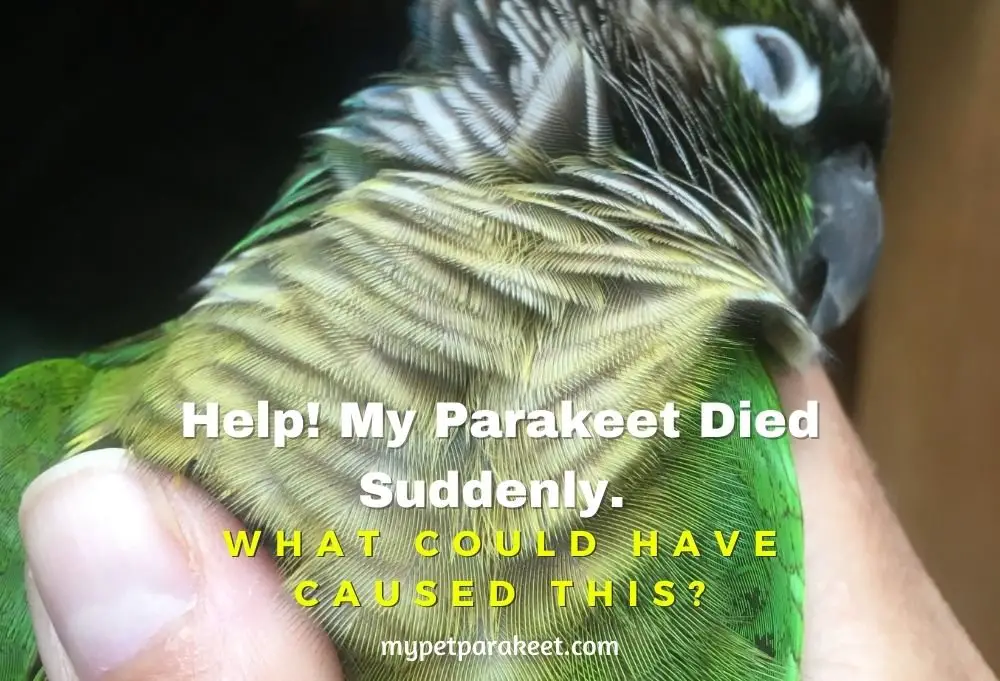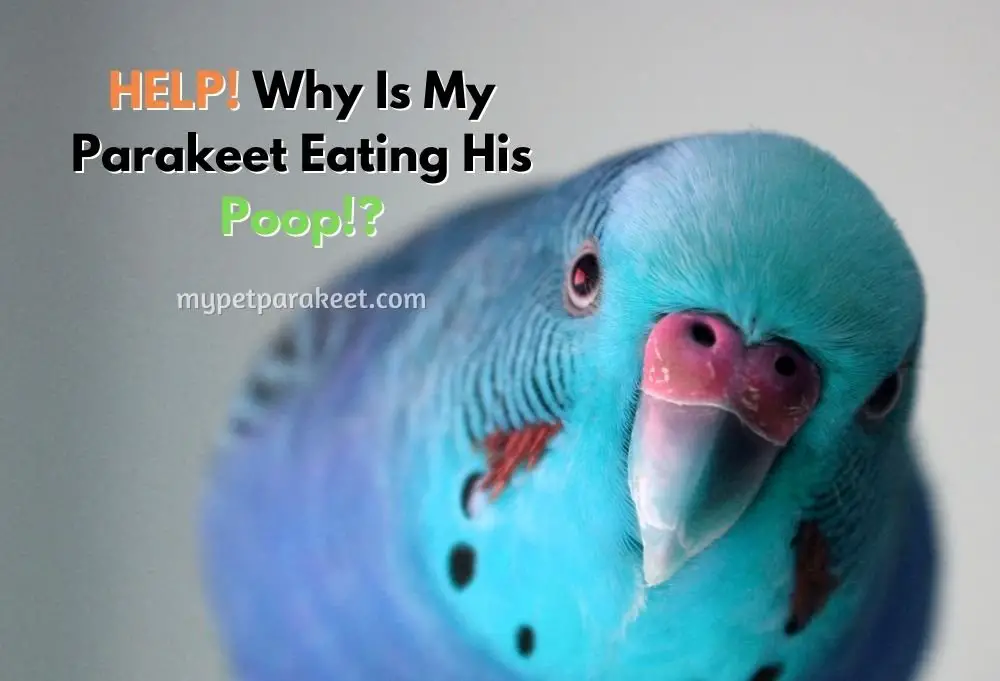This article is all about parakeet first aid kits and what to do in an emergency. Many parakeets owners don't realize that parakeets are more susceptible to injury than other pets, and can often be found in situations where they need emergency help. It's always a good idea to have a parakeet first aid kit on hand at all times so you'll be prepared for any situation. This article will help you be prepared for any unfortunate events… but we really hope you will never need to use it!
- What Should Be In A Bird First Aid Kit?
- Recognizing Signs Of Illness In Parakeets
- How Do You Treat A Wound On A Parakeet?
- How Do Parakeets Act Before They Die?
- How Do You Tell If A Parakeet Is Hurt?
- What do I do if my parakeet is bleeding?
- Preventing Parakeet Injuries And Common Casualties
- Things In The Home That Are Dangerous To Parakeets
- What To Do In An Emergency
- Useful Books On Bird First Aid
What Should Be In A Bird First Aid Kit?
You should always have an emergency first aid kit for your parakeet in your house. The kit should include parakeet-friendly items like;
- styptic powder or flour to stop the bleeding of broken feathers and nails
- a heating pad or infrared lamp
- vet wrap or paraffin gauze for burns
- hospital cage for when you need to bring your bird to the vet.
- avian veterinary number or contact details
- veterinary consult information sheet with species-specific treatment guidelines
- washcloth
- neosporin cream
- parakeet nail clippers and nail file
- scissors
- tweezers
- hydrogen peroxide (3% solution)
- charcoal tablets or powder
- cotton swabs
- saline solution
- eyedropper
- organic aloe vera
- pedialyte for rehydratiing parakeets
- syringe for giving fluids and other medications.
- cotton balls or swabs
- wire cutters
- betadine solution for disinfecting wounds
You can find these materials at most pet stores and supermarkets, but it's best to buy them in bulk online so you'll have a supply on hand if needed.
You can also buy a full bird first aid kit with most of these items here.
This will save you from buying each item individually.
Make sure you have consulted an avian vet before administering any treatments.
It's important to always have these parakeet first aid items on hand because they could save your parakeets life. In the event that your parakeet becomes injured.
Recognizing Signs Of Illness In Parakeets
It is important to know the signs of parakeet illness so that you can act fast if your parakeet becomes sick.
Be on the lookout for any of these signs:
- drooping wings
- lethargy or lack of movement
- ceremonial plucking and picking feathers from their body
- sneezing or coughing
- loss of appetite
- weight loss/weight gain
- vomiting/diarrhea
- red or swollen eyes.
Additionally, if you notice that your parakeet's feathers are puffed out, they may be in pain or experiencing difficulty breathing.
In case of any of the above, contacting an avian vet is the best course of action. Some veterinarian clinics now operate online and can help you via video call. This can be very convenient but if you do not have a parakeet first aid kit to hand, they are limited to what they can do.
If you sense that your parakeet is getting ill, it's important to act fast.
Keep the following image saved so you can recognize signs of illness in your parakeet and address it. It is very easy to overlook some symptoms of greater issues such as infection which can lead to an emergency.
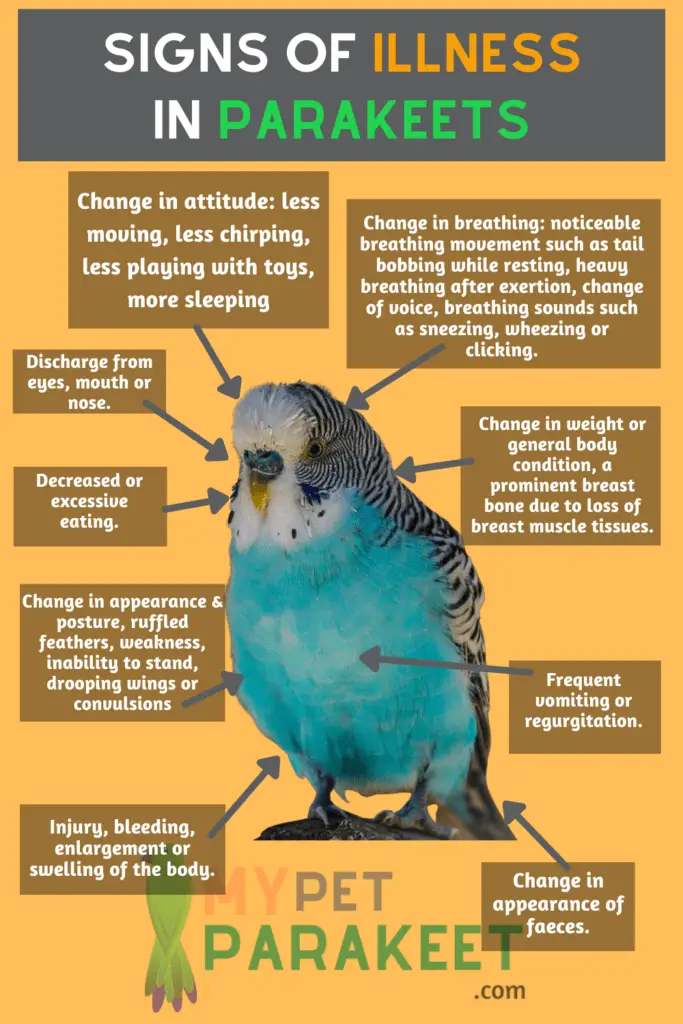
How Do You Treat A Wound On A Parakeet?
According to the Avian First Aid document, if your parakeet has a minor skin wound and has been bleeding for longer than 5 minutes, you should administer first aid.
First, safely restrain your bird, then wash any dirt or debris off the wound before applying pressure for 1-2 minutes, then apply your parakeet first aid cream. The parakeet should be kept warm in a hospital cage to prevent infection, so make sure that you have one on hand for such emergencies.
If your parakeet has a more serious injury such as an open head wound, it is important to consult with an avian vet before administering parakeet first aid. You may need to administer a temporary fix and bring your parakeet to the vet.
The Avian First Aid document states that for open head wounds, “the bird should be stabilized and immobile on a padded surface such as a towel or pillow” and then the wound should be rinsed with water to remove any dirt or debris.
How Do Parakeets Act Before They Die?
Dying parakeets tend to have a lethargic attitude to everything. They may refuse extra food and water, it's common for them to be scared of you coming near them, they withdraw from their environment (hide or climb high) and don't want handling.
Some also show mood swings between drowsiness & hyperactivity as if they're a child going through an emotional range.
And while these symptoms may sound like pet parents assuming the worst prematurely, in most cases parakeets that are physically sick exhibit these symptoms, too.
For example, calcium deficiencies will result in lethargy, anemia causes hyperactivity with the inability to settle down, kidney disease causes weight loss and appetite loss, liver diseases will cause a parakeet to retreat or shy away from you as they're in too much pain.
In short, whether you suspect your parakeet may be dying or is severely ill, treat it the same way by contacting your vet.
How Do You Tell If A Parakeet Is Hurt?
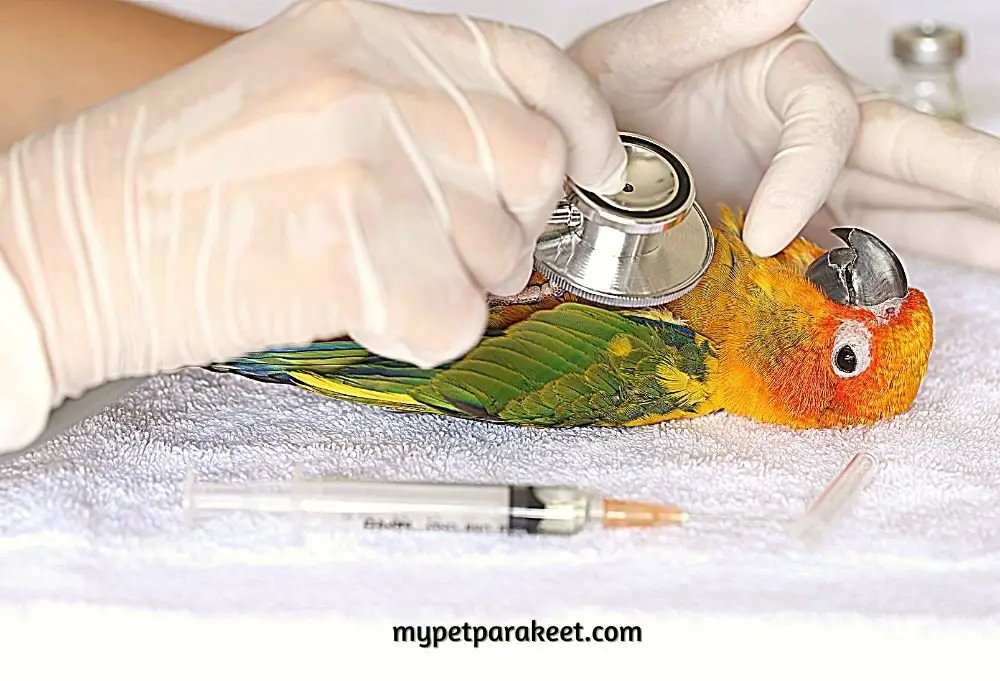
It's safe to assume that the bird is injured if he or she is sitting on the floor and doesn't try to fly away when you approach. Birds, in general, should be alert and aware of their surroundings at all times.
So an injured bird may sit close to items such as perches or cages with their head tucked which suggests a need for care and possible pain relief.
Birds will also decrease their activity levels especially if they are unable to fly; birds who have been feeding themselves but are now limited can often use the feeder again with help from a person nearby so that they don't lose food-sources all together.
What do I do if my parakeet is bleeding?
If your parakeet is bleeding due to a broken blood feather or has a bleeding nail, do not worry too much. These are very common and small injuries that can be treated at home.
Styptic Powder
Using the styptic powder in your bird first aid kit, put a small amount on the parakeet's wounded nail or feather to stop the bleeding.
You should only use the styptic powder on the nail as it can sting on the skin quite a bit.
If you do not have a parakeet first aid kit handy, just use cornstarch or flour from your kitchen (make sure it is plain and unflavored).
If your parakeet has blood in their stool or vomit, it may be due to a ruptured crop caused by an injury. If this is the case, you must consult with an avian vet because parakeets do not self-heal for this kind of trauma nor is it something you can assess or treat properly at home.
Preventing Parakeet Injuries And Common Casualties
You may not know it but your home is a very dangerous place for curious little parakeets!
From mirrors to larger pets like cats or dogs to predators in the wild, if your parakeet flies outside the window.
Remember, your parakeet is a prey animal and will be overcome by fear if they get into a scary situation.
If you have parakeets, it is important to know what can hurt them and take precautions so your parakeet isn't injured or killed in the home environment.
Things In The Home That Are Dangerous To Parakeets
The following list of hazards includes common injuries that parakeets may encounter:
- Mirrors, Glass & Doors
- Other pets
- Poisonous Houseplants
- Household products
- Non-stick cookware
- Standing water
- Ceiling fans
- Toxic food
- Electrical Cords
- Open windows
It is impossible to predict and prevent every parakeet injury.
However, it is important to be aware of some of these hazards and take precautions where possible so you can ensure your parakeet lives a long and healthy life!
What To Do In An Emergency
Anytime that you feel that your pet has been harmed or is in danger of being hurt, this should be considered an emergency situation. Parakeets are very delicate animals who have the potential for going into shock at any time- especially when they're shaken up by a seemingly harmless incident like bumping their head on the wall during playtime with another bird.
It's always best to err side caution so nothing bad will happen because otherwise there might come a day where you'll regret ignoring what seemed like such a small incident.
In case of an emergency have these things handy
- The number of your avian vet
- Address and contact details of the nearest 24/7 animal hospital
- Your parakeet's hospital/transport cage.
- The contact details of your neighbor or bird sitter if you have one.
- “In Case Of Fire” stickers – you can buy these inexpensively from pet stores or online.
- A towel to wrap around parakeet to keep it calm and warm.
You should be prepared with these things in addition to having your bird first aid kit within reach.





